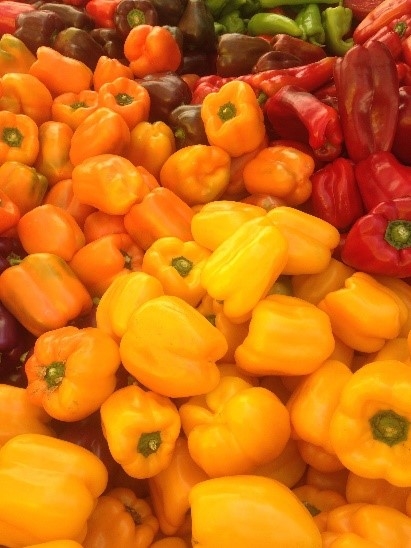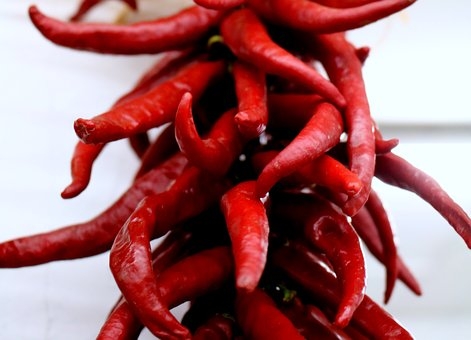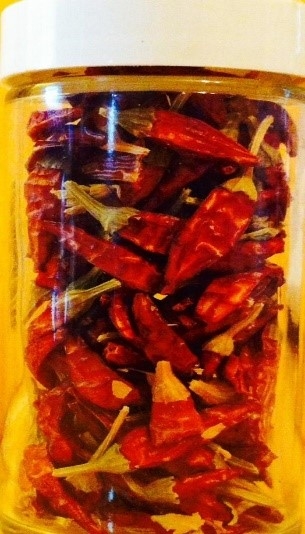
Air drying peppers can be a fun activity to do with children. For the best results, select only firm, fresh peppers free of any blemishes or other damage. Wash them thoroughly. Then use a knife to cut a slit in the stems. Using a large crafting needle, thread light string or a heavy thread through the stems of the peppers. Hang the string of peppers in a well-ventilated room since high humidity can cause the peppers to spoil. The peppers should dry within about four weeks.
Peppers can also be sun dried. Drying peppers in the sun requires a minimum temperature of 90°F for several days, with a humidity level below 60 percent. To sun dry peppers, first rinse them to remove any dirt. Then lay them on screen trays made of stainless steel, plastic, or Teflon coated fiberglass. Do not use galvanized metal, copper or aluminum screens. Place the trays on blocks to increase airflow and cover the peppers with cheesecloth to protect them from birds and insects. Once the peppers are dried, pasteurize them to kill any insect or insect eggs that may have gotten on the peppers. To pasteurize them, either seal them in a freezer bag and place the bag in the freezer (set at 0°F or below) for 48 hours, or lay the peppers out single layer on a tray and place them in the oven pre-heated to 160°F for 30 minutes.
If you have an electric food dehydrator, first thoroughly rinse the peppers and remove the stems and cores. Cut the peppers into 3/8-inch disks and place in a single layer on the dehydrator trays. The peppers generally take 8 to 12 hours to dry in a dehydrator.
You can also dry peppers in your oven, although you may not want to heat up your house using this method in the summer. To dry peppers in your oven, first make sure your oven can be set to 140°F. (Any higher temperature will cook, not dehydrate the peppers.) Place washed peppers single layer on an oven drying tray (note: cake cooling racks placed on a cookie tray work well). Make sure the drying tray clears all sides of the oven three to four inches. If you are placing more than one drying tray in your oven, make sure they're spaced two to three inches apart for air circulation. The oven door needs to be propped open two to six inches during the entire drying process. You can place an oven thermometer near the drying tray to get an accurate temperature reading and adjust the temperature as needed to reach 140°F. Since oven drying takes about twice as long as an electric food dehydrator, it will take approximately 16 to 24 hours to dry peppers using this method. Just be sure to let the peppers completely cool before packaging them for storage.
Dried peppers can be stored for several months in a cool dark place. They should be stored in moisture proof packaging such as a glass jar or freezer container. Plastic freezer bags can be used but be aware that they are not rodent proof. Rehydrate dried peppers for use in dishes like casseroles by soaking them in water. Or you may opt to crumble or turn the dried peppers into a powder to use as a seasoning.
Source of information and more reading:
For more information on drying peppers, see Peppers: Safe Methods to Store, Preserve and Enjoy from the University of California Division of Agriculture and Natural Resources accessible at https://anrcatalog.ucanr.edu/pdf/8004.pdf and Preserving Food: Drying Fruits and Vegetables from the University of Georgia Cooperative Extension Service accessible at https://nchfp.uga.edu/publications/uga/uga_dry_fruit.pdf.
For more information about the UC Master Food Preserver Program, including the Food Preservation Video Library, visit mfp.ucanr.edu.

